
Hartford Union Station is a railroad station in Hartford, Connecticut, United States on the New Haven–Springfield Line. It is served by Amtrak Hartford Line, Northeast Regional, Valley Flyer, and Vermonter intercity rail service, plus Hartford Line commuter rail service.

The Engine Company 9 Fire Station is located at 655 New Britain Avenue in Hartford, Connecticut. Built in 1929, it is a distinctive application of the Tudor Revival to firehouse design, and it was one of the city's first "suburban" fire stations, set in an originally less-developed outlying area. The building was listed on the National Register of Historic Places on March 2, 1989. It continues to serve its original function, housing Engine Company 9 of the Hartford Fire Department.
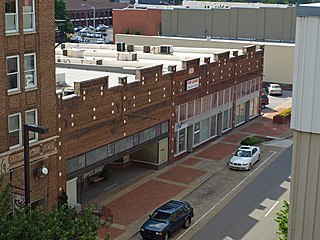
Beckers Block is a group of historic commercial buildings in Huntsville, Alabama. The two-story, five-bay structure was built in 1925. Each bay is separated by piers that project above the roofline. The center of each bay is raised above the parapet, creating a crenelated appearance. Below the parapet, a rectangular panel is formed from header courses. Cream-colored square stones decorate the entire façade.

105 South Washington Street in Huntsville, Alabama, is a historic commercial building. It was built in 1931, after the previous building on the site had burned in 1925. The street level of the two-story brick building has three single-pane windows on either side of a recessed entry. A row of similar windows runs above the street level, separated by a row of rectangular panels. Above the storefront level sits a panel of soldier course bricks, with decorative terra cotta floral blocks on the corners. The same blocks are used on the top corners of the surrounds for five windows above. The frieze is terra cotta, with a series of narrow flutes above a decorative bed-mould chain. The cornice features a geometric X-pattern with small dentils on each block. The terra cotta detailing exhibits Art Deco influence, popular at the time the building was constructed. The building was listed on the National Register of Historic Places in 1984.
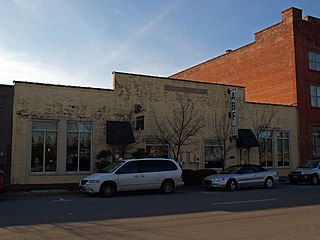
The Kelly Brothers and Rowe Building is a historic warehouse in Huntsville, Alabama. Built in 1928, the façade is nearly free of ornamentation, except for a raised central parapet, with a plaque reading "Kelly Bros. & Rowe", and soldier course brick outlining the building and openings. Originally, the front featured two large warehouse doors, each with an entry door and a multi-pane window towards the center of the building. The warehouse doors have each been replaced with a twin-pane fixed window and transom, and the multi-pane windows have been replaced with a single pane and transom.
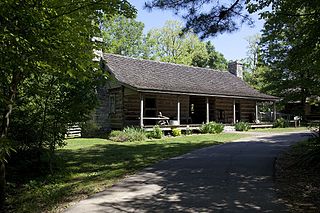
Burritt on the Mountain is an open-air museum in Huntsville, Alabama. The museum grounds on Round Top Mountain, a plateau connected to Monte Sano Mountain, were the estate of local physician William Burritt, who willed his house and land to the city for use as a museum upon his death in 1955. A number of 19th-century rural structures have been added to Burritt's mansion, both in the interest of historical preservation and life re-enactment.
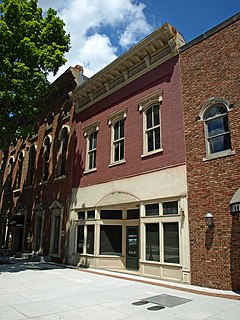
The Rand Building is a historic commercial building in Huntsville, Alabama. Built in 1883, it and the adjacent building, the Donegan Block, represent a simplified Italianate architecture style common in smaller towns in the late 19th century. It is one of few remaining Italianate buildings which once were prevalent on Courthouse Square. The two-story green-painted brick building has an elaborate bracketed metal cornice with decorative panels between the brackets. The street-level façade has large four-pane fixed windows supported by paneled bulkheads, with a central recessed entry. A second row of smaller windows runs above the first, below a smoothed concrete header panel which along which an awning runs the width of the building. On the second floor, three two-over-two sash windows with segmental arched tops are in a frame recessed one course from the rest of the building. It was listed on the National Register of Historic Places in 1980.
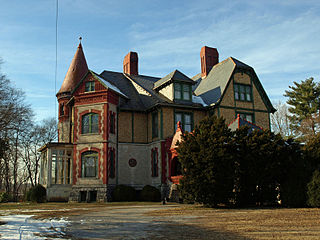
The Kildare–McCormick House is a historic residence in Huntsville, Alabama. The highly ornate, Queen Anne-style mansion was built in 1886–87. Its early owners contributed to the development of Huntsville, both through industrial projects and philanthropic efforts. The house was listed on the National Register of Historic Places in 1982.

The Yarbrough Hotel is a historic building in Huntsville, Alabama. The four-story structure was built of brick and reinforced concrete in 1922–25. The top three floors contain 75 rooms, while the ground floor features the hotel lobby and storefronts; as it did not have a ballroom or party rooms, it catered to businessmen. It faced competition from the Twickenham Hotel one block away, and the Russel Erskine Hotel. Yarbrough operated as a residential hotel until the late 1950s, and was renovated in the 1980s.
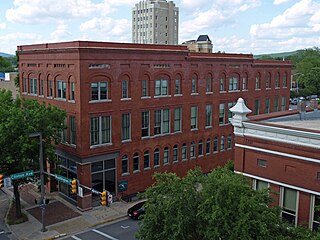
The Dunnavant's Building is a historic commercial building in Huntsville, Alabama. It was built in 1905 by dry goods company Terry Brothers & Rogers. P. S. Dunnavant took control of the company in 1925, and the store remained in its downtown location until 1975. The third floor and roof were damaged in a fire in 1940. The ground floor on the Washington Street façade is framed by large brick piers with polished marble bases. Large display windows flank a recessed entry with a central column flush with the façade. All other windows are one-over-one sashes. A row of small, evenly spaced arched windows line the ground floor along the Clinton Avenue side. On the second floor façade there are two groups of four windows, each group sharing a stone sill. Third floor windows are smaller, and joined by brick arches. Windows along the Clinton Avenue side are similarly treated. The building is topped with a simple, denticulated cornice, with the roofline stepping down towards the rear of the building. The building was listed on the National Register of Historic Places in 1980.

The Struve–Hay Building is a historic commercial building in Huntsville, Alabama. Built in 1900, it represents a transition between Victorian architecture style and the less ornamented Commercial Brick style. The building was originally two stories with a three-story tower on the corner, but the second story of the Jefferson Street façade was removed in 1955. Previously consisting of two storefronts, the Jefferson Street side was later combined into one, with a recessed central entrance flanked by pilasters and two large single-pane fixed windows on either side. This portion of the building is also painted white with green accents, rather than the red with unpainted stone accents of the remainder of the building, providing additional visual separation. The corner and first bay of either side are adorned with stone pilasters with capitals supporting a stone course that wraps around the building. The tower has a single one-over-one sash window on each face of the second floor, with a pair of small arched windows on the third. It is topped with a pyramidal roof and ball finial. Along Holmes Avenue, the first floor has no windows, while the second floor has a pair of one-over-one windows per bay. The building is topped with a bracketed pressed metal cornice. The roof on the end of the building on the Holmes side steps down to a separate unit, featuring a Romanesque Revival arched entryway below a bay window. The building was listed on the National Register of Historic Places in 1980.

The First National Bank is a historic bank building in Huntsville, Alabama. The temple-form Greek Revival structure was built in 1835–1836. Designed by locally famous architect George Steele, it occupies a prominent position, facing the courthouse square and sitting on a bluff directly above the Big Spring. It was the longest-serving bank building in Alabama, operating until 2010 when Regions Bank moved their downtown branch to a new location. The building was listed on the National Register of Historic Places in 1974.

The Schiffman Building is a historic commercial building in Huntsville, Alabama. The main structure of the building was built in 1845. Originally, it was a three-bay brick building divided by large, flat pilasters. The southern bay, at the corner of East Side Square and Eustis Avenue, was remodeled in the Richardsonian Romanesque style in 1895. The other two bays were demolished in the 1970s. Future Speaker of the U.S. House William B. Bankhead used the building as an office while he was Huntsville's city attorney from 1898–1902; his daughter, actress Tallulah Bankhead, was born in the second floor apartment. Issac Schiffman, a businessman and banker, purchased the building in 1905 and it has remained in the family since.
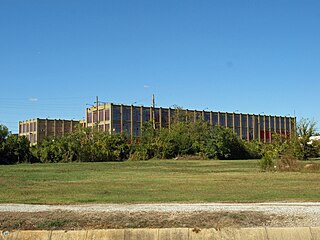
The Lincoln Mill and Mill Village Historic District is a historic district in Huntsville, Alabama. Opened in 1900, it quickly grew to be Huntsville's largest cotton mill in the first quarter of the 20th century. After closing in 1955, the mills were converted to office space that was used by the U.S. space program. Two of the older production buildings burned in 1980, but one main building and numerous houses built for workers remain. The district was listed on the National Register of Historic Places in 2010.
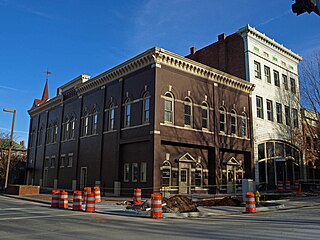
The Milligan Block is a historic commercial building in Huntsville, Alabama. It was built in 1900 and represents the transition from vertically-oriented Italianate style to more restrained, horizontally-oriented commercial styles of the early 20th century. It retains Italianate details such as an applied metal cornice and arched windows, but eschews other applied decoration in favor of using structural elements to provide ornamentation.
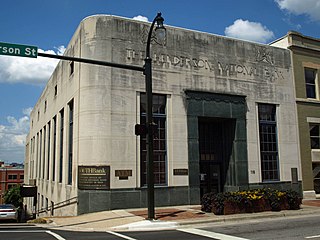
The Henderson National Bank building is a historic bank building in Huntsville, Alabama. One of the only Art Moderne style buildings in Huntsville, the bank was built in 1948. The outer walls are constructed of large blocks of ashlar, while the base and entrance surround on the Jefferson Street façade are lined with dark green stone. The recessed double doors sit below a tall, multi-pane toplight. The entry is flanked by tall, multi-pane windows, giving the façade a much more vertical orientation than the early 20th-century commercial brick style. The upper portion is inscribed with two geometric flower shapes in relief and the name of the bank. The corner wall is rounded, leading to more tall windows along the side. A drive-up teller window was added to the rear of the building in 1958, which is faced with light tan brick.

The Hundley Rental Houses are historic residences in Huntsville, Alabama. The houses were built by Oscar Richard Hundley, a prominent local judge and politician. Hundley built the two houses behind his own, along with a third one block away, in 1905. The houses all represent the transition from Victorian styles popular in the late 19th century to Colonial Revival styles of the early 20th century. A fire damaged the house at 400 Franklin Street in 1909, and a rear addition was likely added at this time. Hundley sold his own house the same year, and sold 400 Franklin in 1912 and 108 Gates Avenue in 1918. The houses are in use today as offices.

The W. T. Hutchens Building is a historic commercial building in Huntsville, Alabama, United States. A three-bay building on the corner of Jefferson Street and Clinton Avenue, the two corner bays were built in 1916 and the third built in a nearly identical style in 1921. It was built in the Early Commercial brick style, which departed from highly ornamented, vertically-oriented Victorian styles, instead emphasizing horizontal orientation by using strong horizontal courses and shorter, wider windows. It contrasts with the later Terry Hutchens Building, across Clinton Avenue, which is representative of later, again vertically-oriented Gothic Revival styles.

The Elbert H. Parsons Law Library is a historic commercial building in Huntsville, Alabama. It was built in 1913 by the May and Cooney Dry Goods company to replace their building which was destroyed by a fire in 1911. The store occupied the building until 1931, when they went bankrupt due to the Great Depression. J. C. Penney moved into the building in 1934 and remained until 1966, when it moved to "The Mall" on University Drive. In 1973, it was purchased by the county and renovated to house a public law library.

The Mason Building is a historic commercial building in Huntsville, Alabama. It was built by the owners of Mason's Furniture, which was founded in 1908. In 1927, they built a new building which they intended to lease to other tenants. It was designed to be built in stages, and be up to five stories tall, but only the first two were ever built. Sears Roebuck began leasing the building in March 1929, at which time a mezzanine and elevator were added. Sears left Huntsville in 1931 in the midst of the Great Depression, and Mason's moved their store into the building. The company operated until 1977; since then, the building has housed a number of businesses, including a pub.

























